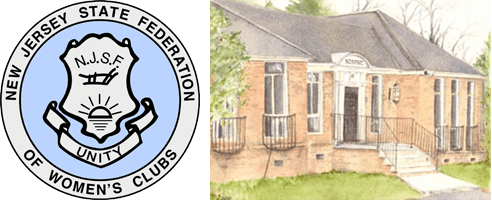WHAT IS ADVOCACY?
 ADVOCATE - What a useful word! As a noun, it is defined as one that defends or maintains a cause or proposal or one that supports or promotes the interests of another. As a verb, it identifies the action to plead in favor of.
ADVOCATE - What a useful word! As a noun, it is defined as one that defends or maintains a cause or proposal or one that supports or promotes the interests of another. As a verb, it identifies the action to plead in favor of.
NJSFWC clubwomen are advocates in the truest sense—they rally around issues of national and state importance and demonstrate the potential impact for communities around the country. Our network of grassroots volunteers works to identify priority legislative issues, share knowledge with members and supporters, advocate on behalf of the Federation's vision, and form coalitions with organizations that share NJSFWC's mission.
NJSFWC policy positions are supported by Resolutions that determine our members' legislative actions. From letter writing campaigns to media outreach and visits to the state capital and Capitol Hill, our members work to further the issues and causes that are integral to NJSFWC’s mission of community improvement.
History of NJSFWC Advocacy
Civic Engagement and Outreach Day, formerly Public Affairs Day, has its roots deep in the NJSFWC tradition of pro-activism in legislation, to better communities and society as a whole. The inception of the day was at the NJSFWC Board Meeting held in March 1908 at The Contemporary – Trenton’s club house.
Sign up for Legislative Alerts
LEGISLATIVE FOCUS AREAS
Domestic Violence Awareness/Prevention
Women’s Health
Safety
Open Space Preservation
Children/Disadvantaged
Literacy
How do I contact my legislators?
ANATOMY OF A RESOLUTION
A resolution is a statement of policy or position on a single issue, and should, therefore, only address one issue. Resolutions consist of 3 parts, each with a specific function.
- The TITLE provides the subject.
- The WHEREAS section identifies and explains the problem that needs to be addressed, providing facts that establish the foundation for the proposed solution. Each fact is listed separately beginning with WHEREAS and ending with a semi-colon. The final WHEREAS ends with a semi-colon followed by the word “therefore.”
- The RESOLVED section proposes a solution that will address the problem identified in the previous section. The first RESOLVED proposes the action that will be taken. It may either be urging the passage of a particular piece of legislation, or advocating support for the enactment of legislation or for a particular action. The second RESPOLVED statement asks for the resolution to be sent to various decision makers and interested individuals dependent on the subject of the resolution.
NJSFWC Bylaws, Article X Committees, Section 2, n. outlines, a.) who may submit a suggestion for a resolution, b.) how resolutions are to be submitted to the NJSFWC Legislation/Resolutions Committee and c.) when the suggestions for resolutions are to be submitted. Resolutions are considered for adoption by the delegates at the Annual Convention held each May.
